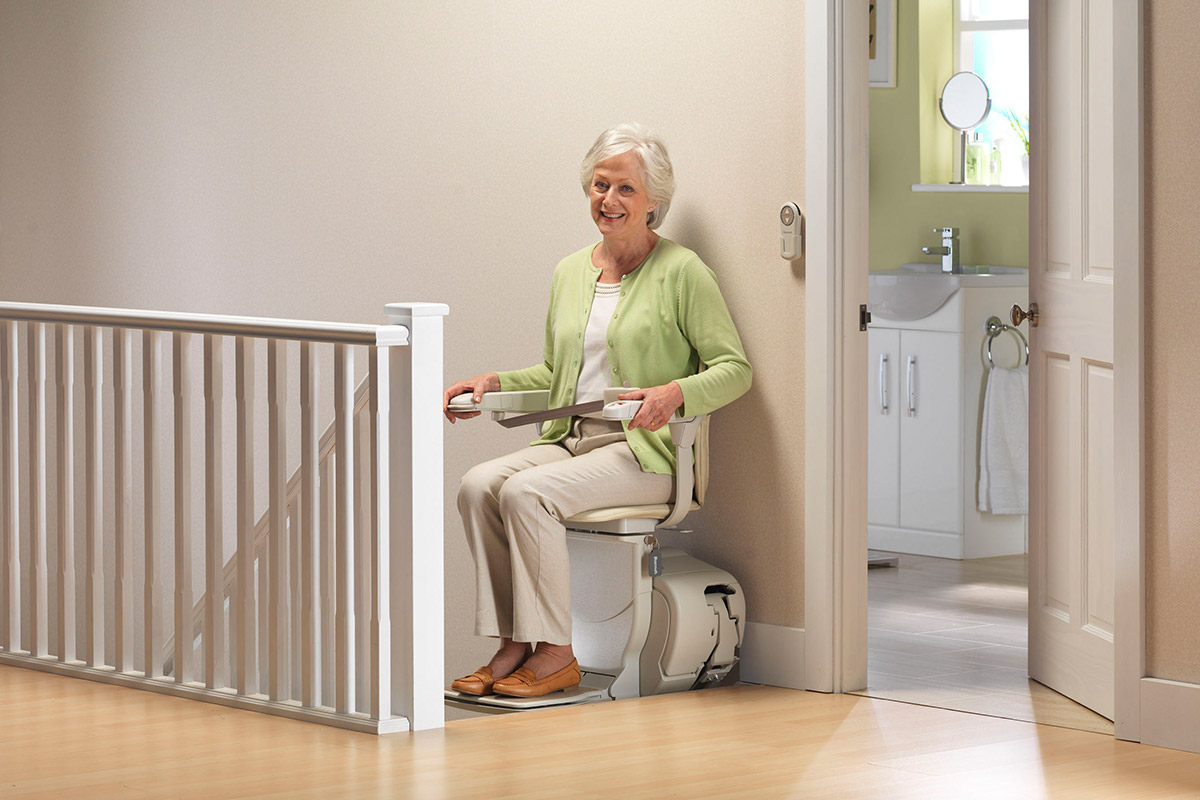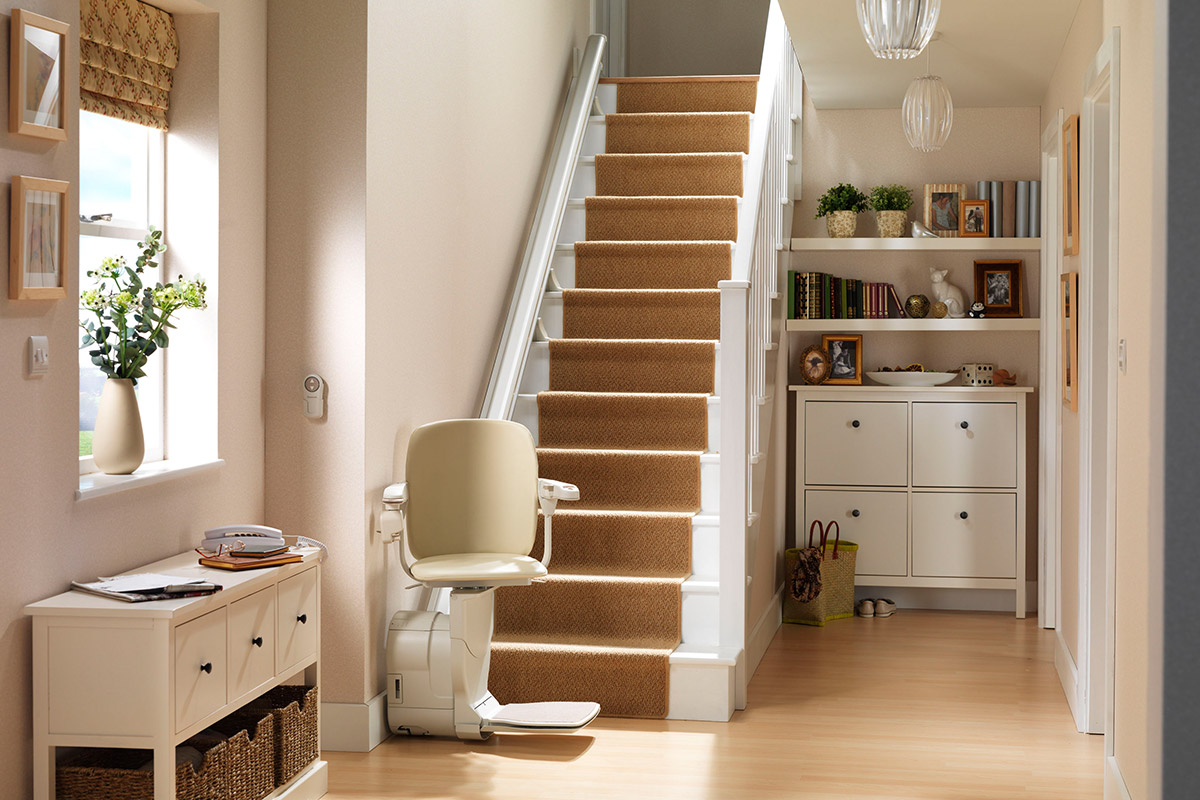How is a stairlift installed?
Written by Stannah

A stairlift’s doesn’t require remodelling or extensive building work. Still, there are a few things you need to consider before the installation.
Are you planning to install a stairlift in your home? Congratulations, you’re one step closer to regaining your independence and freedom of movement.
People with reduced mobility find that a chairlift can be very useful in their day to day, especially if going up and down the stairs every day poses a danger to their safety and they don’t wish to move house.
For them, stairlifts can be a quite a safe alternative. And it may come as surprise to you and your loved ones but installing a stairlift doesn’t involve extensive building work or heavy construction. In fact, it’s quite a straightforward process.
That said, there are still a few things you need to look out for when having a stairlift installed in your home. Let’s take a look at some of the factors that influence a stairlift installation.
How is a stairlift installed in 4 steps

Installing a stairlift normally takes less than a day, usually around 5 hours.
When our installation team arrives at your home, they’ll do a thorough inspection of your staircase and check all factors that can compromise the installation.
Here are a few things they usually check:
1. A power outlet nearby
Before installing your chairlift, we need to ensure you have a power outlet within 10 feet of the top or bottom of the stairs. This type of information is usually gathered during the first stair assessment by one of our mobility experts.
The power outlet is essentially for the installation because it’s used to charge the batteries and power the stairlift.
This will ensure that you’ll never get stuck in the middle of the stairs during a power outage since the batteries will keep your stairlift running. Our installers will also make sure that all wires are buttoned up and neat, so you don’t have to worry about loose wires on your stairs.
2. Adequate stair width
The minimum staircase width required to install a stairlift usually depends on the type of stairs you have and the stairlift model you prefer.
For instance, if you have a straight staircase, it should have a width of at least 71 cm. If, on the other hand, you have a curved staircase and depending on the shape of its turn, it should have a 76cm width minimum.
Handrails and other obstructions can also reduce your staircase width. So, when considering staircases’ width requirements, they should be measured from the furthest obstruction. But if you’re worried about the width of your stairs and already thinking that it’s impossible to install a stairlift in your staircase, we have stairlifts design especially for narrow staircases, so you don’t have to worry about it.
3. Sufficient head clearance
In most modern homes, head clearance isn’t a big issue. But if you wish to install a chairlift in the stairs that lead to your basement though, we made need to take measurements to ensure you don’t bump your head on the ceiling when going up and down the stairs.
Either way, you don’t have to worry about it. When we do a stair evaluation, this is the first thing we check and if there’s an issue, we’ll try and find a way around it.
4. Enough space at the top and bottom of the stairs
Whether your staircase is straight or curved, you need to have enough space at the top and bottom of the stairs so you can get off easily and safely.
If you have furniture, a doorway or an open hall at the bottom of the stairs, you need to consider the fact that a standard rail usually sticks out about 46 cm from the bottom step. But when we assess your staircase, we’ll take that into account and let you know what we can do to get around this sort of issues.
Frequently asked questions about stairlift installation

Does a stairlift require extensive building work?
Generally, stairlifts don’t require extensive building work because they are installed on the treads of your stairs, not the wall.
When we attach the stairlift to the stair treads, the wall next to it isn’t necessary for the installation.
Some people feel a bit unsure when hearing this, thinking the stair treads won’t be able to carry that much weight. But in fact, stairs treads are made to carry a lot of weight, which means you don’t even need to reinforce or alter them in any way to have a stairlift installed. Most likely, your stairlift will fit the stair treads you have just fine.
Will a stairlift damage my stairs?
Another question we’re asked frequently is if a stairlift will significantly damage the stairs. The answer is no, it will not.
When installed by professional technicians, a stairlift shouldn’t make any significant damages to your staircase.
Usually, minimal brackets are used to attach the stairlift to the stairs. So, if you ever wish to remove your stairlift, the only thing you’ll be able to spot are some small holes where a few drills were made, and which can be covered up easily.
Can I install a chairlift on any type of stairs?
Generally, yes. We can install stairlifts on most stairs. Typically, most staircases in modern homes meet the minimum requirements for installing a stairlift. Whether your staircase is wide or narrow, straight or curved, at Stannah we’ll be able to find a solution that fits your mobility needs and your home.
Learn more about our stairlif’s dimensions.
How long does it take to install a stairlift?
The installation of a stairlift takes less than a day. Usually, straight stairlifts take only a few hours to install and curved stairlifts take around half a day to install.
Efficient installation by trained professionals
The installation of a stairlift should always be carried out by experienced professionals.
We strongly advise against self-installations that can compromise the stairlift’s reliability and your own safety. Unsafe installations can damage your stairlift, cause it to break down and even lead to serious accidents.
So, when considering buying a stairlift, always look for a company that will also install it for you. At Stannah, our technicians will install your stairlift and ensure you know how to use it before leaving your home. And if you have any questions afterwards, we’re just a phone call away.



